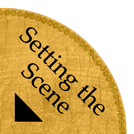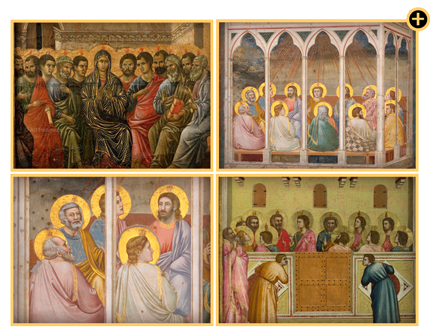
A Story Unfolds
Seven Moments


Pentecost is one of seven surviving paintings by Giotto in what is believed to be a series depicting the life of Christ. The sequence of events begins with Jesus's birth and visitation by the three wise kings (The Adoration of the Magi). It ends with an event following Christ's death, ascension, and resurrection, when the Holy Spirit descends upon the apostles in the form of a dove (Pentecost).


Setting the Scene
A New Depiction of Emotion


Planning the unfolding of a narrative across images is one important aspect of storytelling; another is how to characterize the nature of an event.
In Pentecost, the apostles, suddenly speaking in foreign tongues upon the descent of the Holy Spirit, look confounded by the miracle of which they are a part. Passersby also react. Giotto made this supernatural moment believable by presenting his characters in human terms.
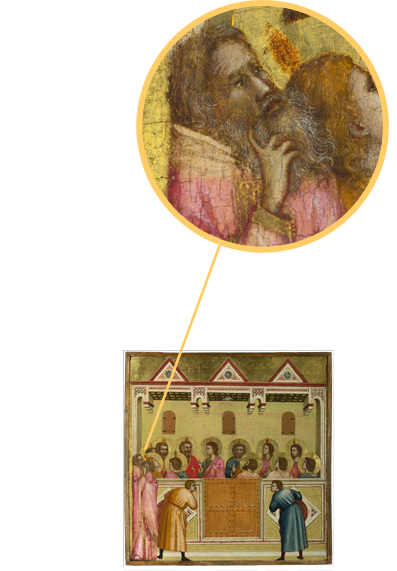

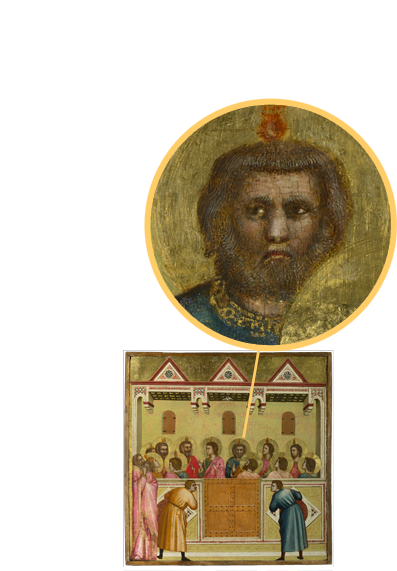
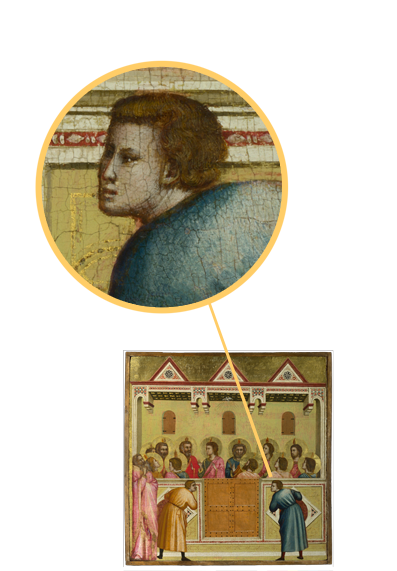

Viewer as Witness
A Newfound Realism


The desire to understand and internalize Christ's sacrifice was central to spirituality as practiced in Tuscany in the 1300s.
Since painting could serve as a form of nonverbal storytelling, it was important that holy characters be depicted clearly and in ways suitable to their status. Giotto (and other Florentine artists of his time) did not always strictly follow such a strategy.


Viewer as Witness
An Artist of Great Depth


Giotto's approach to narrative became influential because of his mastery at depicting architectural settings. Scenes were designed to give viewers a sense of stepping into the action. Notice how in The Last Supper Giotto attempts to make the space believable with receding lines and light and shadow. Later Florentine architects and artists invented and applied mathematical strategies of linear perspective.
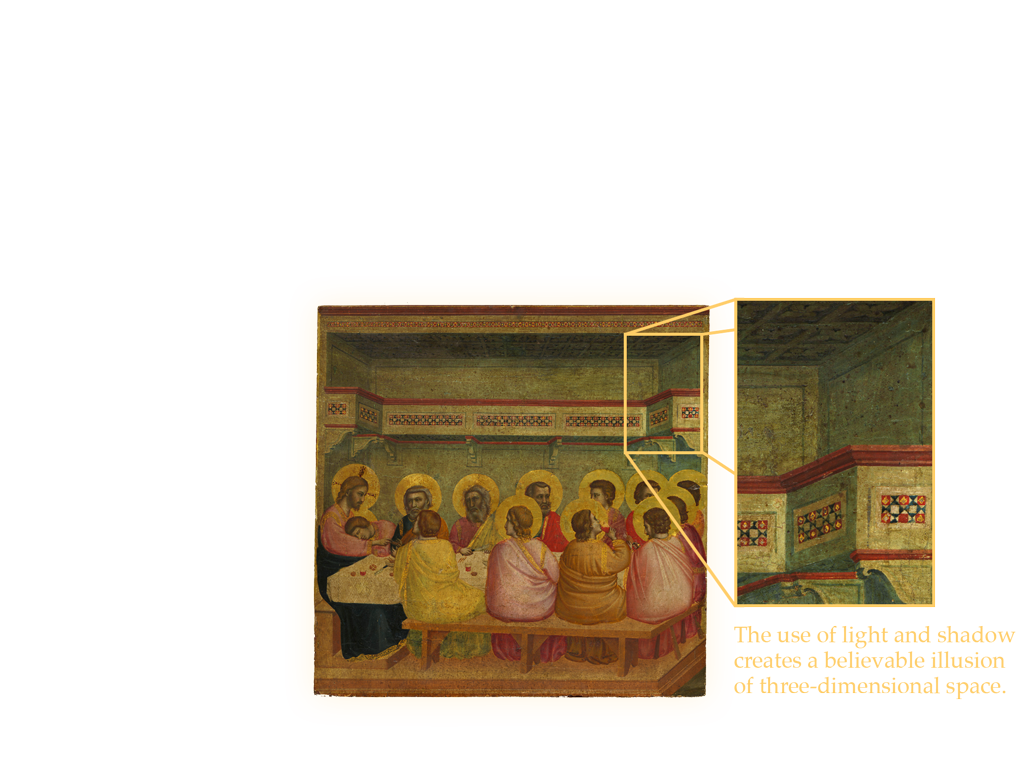
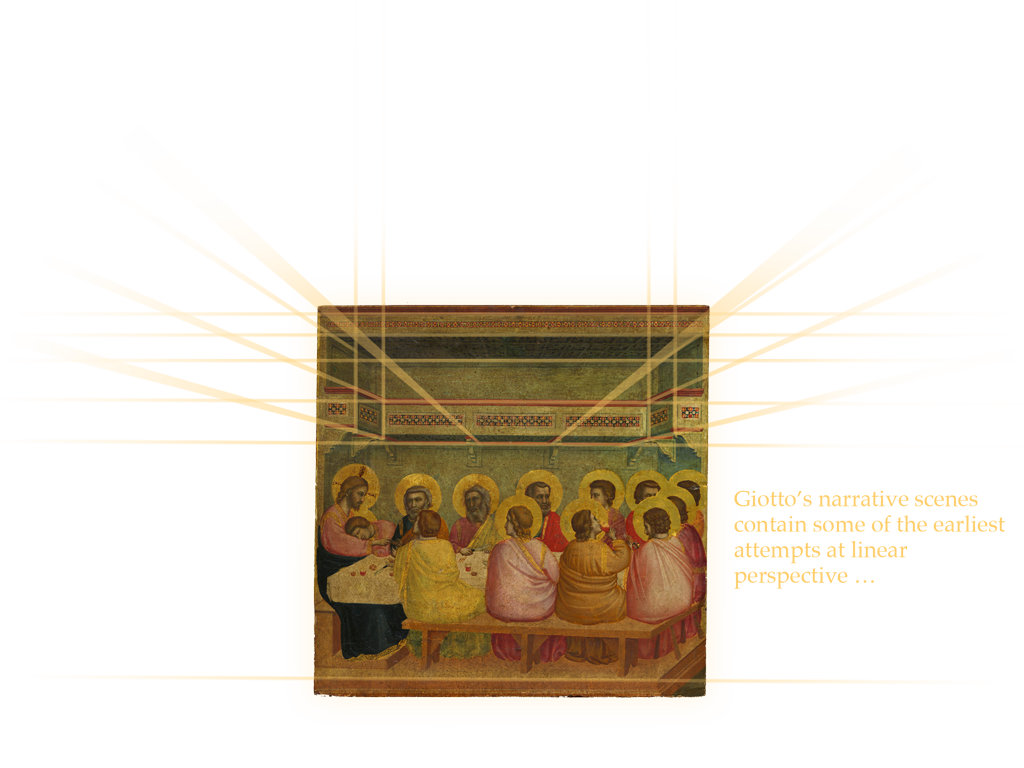
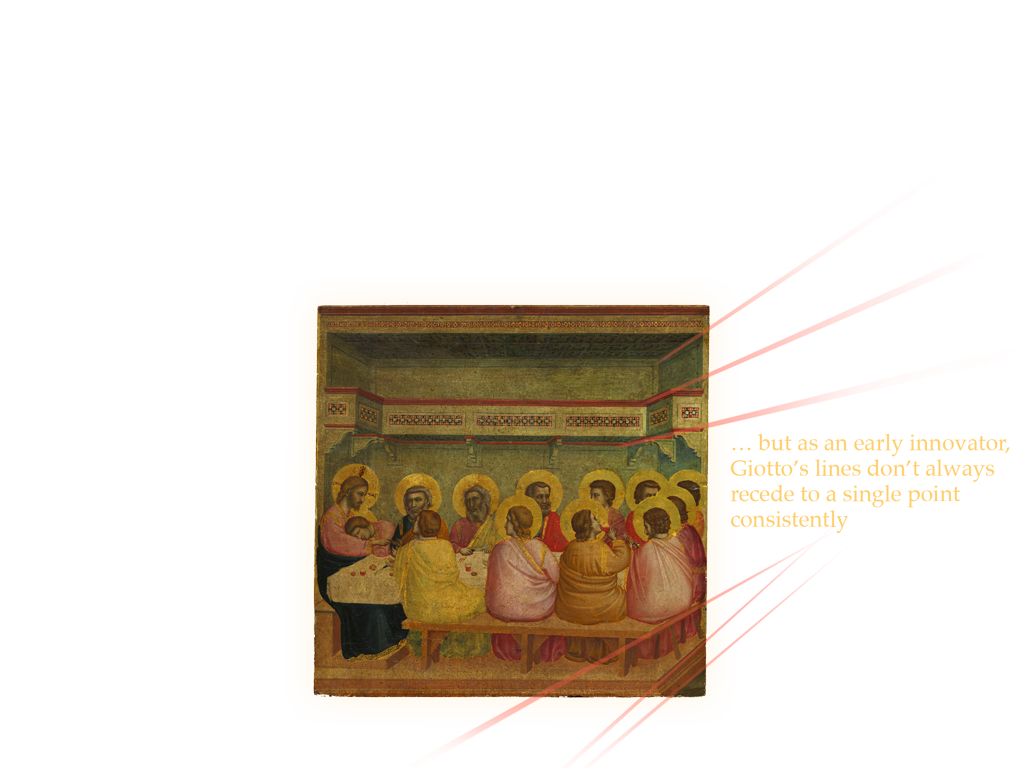


Structuring Narrative
Giotto's Telltale Walls


Fourteenth-century artists understood that a sequence of painted images could effectively create a sense of events unfolding in time.
Giotto's frescoes for the chapel of the wealthy Paduan moneylender Enrico Scrovegni—made some years earlier than the artist's seven-panel series—offer a good example of the complexity of such painted narrative cycles. The scenes depict the lives of Christ and the Virgin Mary and are sequenced in three tiers. They follow a spiral progression along the sides of the chapel's interior walls, with the earliest events at the top.
